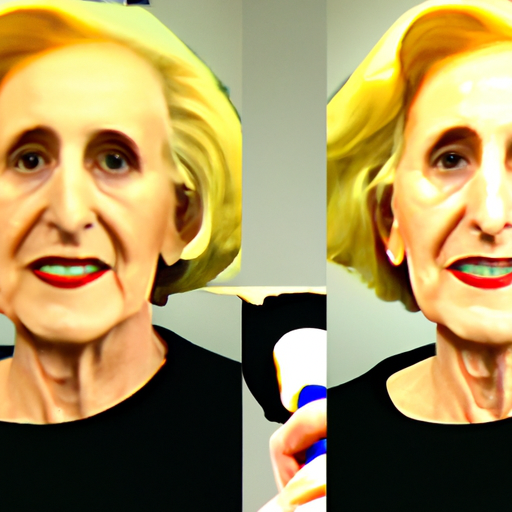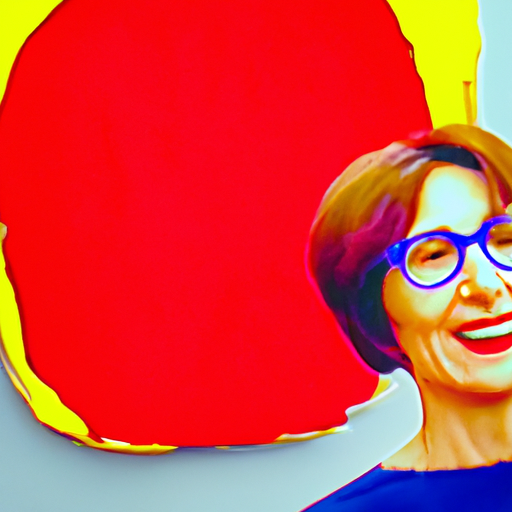
-
Table of Contents
- Art Therapy and Its Role in Graphic Design
- The Intersection of Art Therapy and Graphic Design
- Enhancing Creativity and Imagination
- Improving Self-Awareness and Self-Expression
- Providing a Therapeutic Outlet for Stress and Emotions
- Stimulating Problem-Solving Skills
- Facilitating Communication and Empathy
- Case Studies and Examples
- Case Study 1: The Healing Power of Art in Design
- Case Study 2: Art Therapy for Designers with Anxiety
- Conclusion
Art Therapy and Its Role in Graphic Design

Art therapy is a form of therapy that utilizes the creative process of making art to improve a person’s physical, mental, and emotional well-being. It has been widely recognized as an effective treatment for various mental health issues, including anxiety, depression, and trauma. While art therapy is commonly associated with counseling and psychotherapy, its principles and techniques can also be applied to other fields, such as graphic design.
The Intersection of Art Therapy and Graphic Design
Graphic design is a creative field that involves visual communication and problem-solving through the use of typography, imagery, and layout. It requires a deep understanding of aesthetics, psychology, and communication. Art therapy, on the other hand, focuses on self-expression, emotional exploration, and personal growth through art-making. Despite their differences, these two disciplines share common ground and can complement each other in various ways.
Art therapy can play a significant role in graphic design by:
- Enhancing creativity and imagination
- Improving self-awareness and self-expression
- Providing a therapeutic outlet for stress and emotions
- Stimulating problem-solving skills
- Facilitating communication and empathy
Enhancing Creativity and Imagination
Art therapy encourages individuals to tap into their creativity and explore new ideas. By engaging in art-making exercises, graphic designers can break free from creative blocks and find fresh inspiration. The process of creating art without constraints allows designers to think outside the box and develop innovative solutions to design problems.
For example, a graphic designer struggling with a lack of ideas for a logo design project could benefit from art therapy exercises that involve free drawing or collage-making. These activities can help stimulate the imagination and generate new concepts that may not have emerged through traditional brainstorming methods.
Improving Self-Awareness and Self-Expression
Art therapy encourages individuals to express themselves freely and authentically through art. This process can help graphic designers gain a deeper understanding of their own emotions, thoughts, and experiences. By exploring their inner world, designers can develop a stronger sense of self-awareness, which can inform their design choices and enhance the overall quality of their work.
For instance, a graphic designer working on a branding project for a healthcare organization may find it beneficial to engage in art therapy exercises that explore themes of healing, compassion, and empathy. By delving into their own emotions and experiences related to these themes, the designer can create designs that resonate with the target audience on a deeper level.
Providing a Therapeutic Outlet for Stress and Emotions
Graphic design can be a demanding and stressful profession, with tight deadlines, client expectations, and creative challenges. Art therapy can serve as a therapeutic outlet for designers to release stress, process difficult emotions, and find emotional balance.
Engaging in art-making exercises, such as painting, drawing, or sculpting, can help designers channel their emotions into a creative process. This can provide a sense of relief and catharsis, allowing designers to approach their work with a clearer and more focused mindset.
Stimulating Problem-Solving Skills
Art therapy often involves problem-solving exercises that require individuals to think creatively and find solutions. These problem-solving skills can be directly applied to graphic design, where designers are constantly faced with challenges that require innovative thinking.
For example, a graphic designer working on a website redesign project may benefit from art therapy exercises that involve creating abstract compositions using different materials. This exercise can help the designer develop a more flexible and open-minded approach to problem-solving, leading to unique and effective design solutions.
Facilitating Communication and Empathy
Art therapy encourages individuals to communicate and connect with others through art. This can be particularly valuable for graphic designers, as effective communication is essential in understanding client needs and creating designs that effectively convey messages.
By engaging in art therapy exercises that involve collaborative art-making or group discussions, designers can develop better communication skills and empathy. These skills can help designers build stronger relationships with clients, understand their perspectives, and create designs that meet their expectations.
Case Studies and Examples
Several case studies and examples demonstrate the effectiveness of art therapy in graphic design:
Case Study 1: The Healing Power of Art in Design
In a case study conducted by a design agency, a graphic designer struggling with burnout and creative block was introduced to art therapy techniques. Through art therapy sessions, the designer was able to reconnect with their creativity and find new inspiration. The designer’s subsequent design work showed a significant improvement in quality and innovation.
Case Study 2: Art Therapy for Designers with Anxiety
In another case study, a group of graphic designers with anxiety disorders participated in an art therapy program specifically tailored to their needs. The program included art-making exercises aimed at reducing anxiety and promoting relaxation. The designers reported a decrease in anxiety symptoms and an improvement in their ability to manage stress, resulting in increased productivity and job satisfaction.
Conclusion
Art therapy can play a valuable role in graphic design by enhancing creativity, improving self-awareness, providing a therapeutic outlet for stress, stimulating problem-solving skills, and facilitating communication and empathy. By incorporating art therapy principles and techniques into their practice, graphic designers can not only improve their own well-being but also create more meaningful and impactful designs.
As the field of graphic design continues to evolve, it is important to recognize the potential benefits of art therapy and explore ways to integrate it into design education and professional practice. By embracing the therapeutic power of art, designers can unlock new levels of creativity, emotional intelligence, and personal growth, ultimately leading to more successful and fulfilling design careers.
